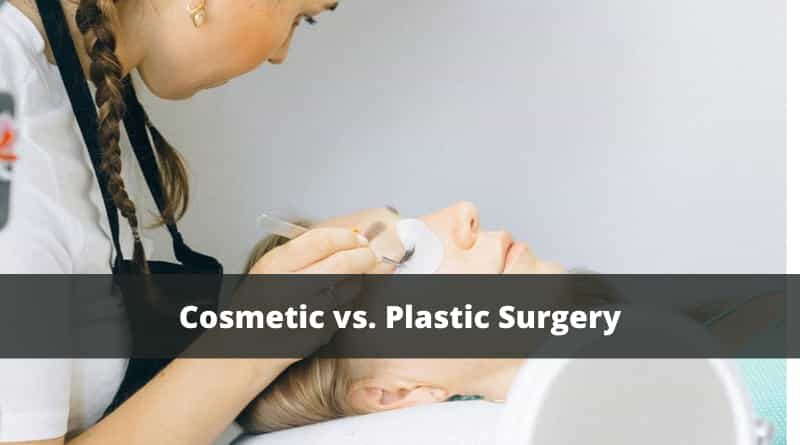Cosmetic vs. Plastic Surgery: All You Need to Know
Cosmetic and plastic surgery are often used interchangeably, but this is misleading because they are not the same. They refer to different types of surgery, have other goals, and even involve physicians undergoing further training. Suppose you are in the United States and need plastic surgery or are considering getting a cosmetic surgery treatment such as breast augmentation in San Francisco. In that case, you must understand the difference between the two.
Table of Contents
What Is Plastic Surgery?
The term plastic surgery refers to the surgical specialty that reconstructs and repairs damaged or missing tissue. The main aim of plastic surgery is to improve the function of a specific facial or body part, though restoring its physical appearance is an important goal.
Plastic surgery is typically employed to treat defects caused by trauma, burns, birth disorders, and disease. These surgeries are usually considered essential procedures. The need for these surgeries is often both physical and emotional. Plastic surgery aims to restore or improve a body part’s function. Still, in doing so, the patient’s mental health and wellbeing are also often bettered as it can boost self-esteem and help people come to terms with trauma or accident.
What Is Cosmetic Surgery?
Cosmetic surgery primarily focuses on aesthetics, altering a person’s physical appearance to find it more visually appealing. This surgery is elective, meaning that patients volunteer to undergo a procedure.
Although cosmetic surgery is considered to be non-essential, it can have considerable emotional benefits. When you like the way you look, you feel more confident and at ease with yourself, which is a massive relief for people who have been unhappy with some part of their appearance for years.
Cosmetic vs Plastic Surgery
Both plastic and cosmetic surgery are broad fields that cover numerous procedures.
Types of Cosmetic Surgeries
Some of the most popular types of cosmetic surgeries include:
Breast Augmentation
Also known as breast implants, this surgery involves increasing a patient’s breasts, typically by inserting a device made of a silicone shell filled with saline or silicone. Many women are motivated to have this surgery because they feel their breasts are too small or have lost breast size after pregnancy or weight loss.
Read: Benefits of Double Eyelid Surgery
Breast Reduction
Many women with large breasts suffer from back pain, neck pain, and even chronic skin irritation and infections. They may also feel self-conscious or find it challenging to exercise. There are several alternative ways to perform this surgery—for example, using liposuction.
Liposuction
Men and women who struggle to lose fat in certain areas of their body despite a healthy diet and exercise can opt for liposuction, a procedure that removes fat cells from the body through suction.
Abdominoplasty
Commonly called a tummy tuck, this procedure involves removing excess fat and skin from the lower abdomen, flattening the tummy, and tightening the abdominal muscles. It’s popular after pregnancy and weight loss or as people age.
Facelift
There are various techniques to perform this procedure for reducing the signs of aging in the face, such as jowls, deep creases, and loose skin. Patients often pair this surgery with eyelid lifts, chin implants, and rhinoplasty (nose) surgery to achieve a more youthful appearance.
Read: Different Ways You Can Have A Facelift
Body Contouring
After losing a lot of weight, it’s common to be left with sagging skin, and many people feel this doesn’t do their new figure and all their brutal work justice. Body contouring refers to a series of procedures that reduces excess fat and skin, improving the body’s shape and firmness.
Dermal Fillers
As you age, your skin, muscles, and fat begin to sag, creating wrinkles. These wrinkles can be corrected by injecting a dermal filler into the skin at specific depths. Most fillers are temporary because, over time, the body absorbs them. Hyaluronic acid, a naturally used material in the human body, is one of the most commonly used fillers.
Read: Benefits of Lip Fillers
Types of Plastic Surgery
Common types of plastic surgery include:
Breast Reconstruction
Some women who have undergone treatment for breast cancer or who are at a high risk of developing breast cancer in the future have a mastectomy, a surgery that removes the breast tissue(1). Women who have lost a breast opt for reconstructive surgery that creates a breast shape with an artificial implant and/or tissue from another part of the body.
Cleft Palate Repair
A cleft palate occurs when the tissue(2) that builds the roof of the mouth can’t fuse entirely during pregnancy. Cleft palate repair is an operation that closes this gap and rearranges the palate’s muscles and lining and is typically performed in the first year of a baby’s life.
Skin Graft
This is a standard treatment for burn victims but is also used for people who have lost skin due to infection, cancer, or trauma, and as part of some nose and breast reconstruction. The surgery involves removing skin from one area of the body and transplanting it to another using a growth matrix.
Read: Botox vs Restylane
Suitable Candidates for Cosmetic Surgery
Although cosmetic surgery is elective, not everyone who wants to undergo treatment is a suitable candidate. For the surgery to be as safe as possible and achieve the best results, the patient should be in a good state of health. The ideal candidate for cosmetic surgery does not have medical conditions that impair healing, is a non-smoker and has realistic expectations for the results.
Depending on the surgery, there may be other requirements or recommendations. For instance, women interested in having their breasts reduced are encouraged to wait until their breasts have fully matured and often until they no longer wish to breastfeed. However, it is possible to do so after surgery. If you are interested in San Francisco plastic surgery or cosmetic surgery, talk to your doctor about your suitability for this kind of treatment.
Training for Plastic and Cosmetic Surgery
Physicians wishing to become plastic or cosmetic surgeons require different training. Board-certified plastic surgeons must complete either an integrated six-year residency that includes three years of general surgery and three plastic surgery or an independent five-year residency in general surgery, plus a three-year plastic surgery residency. This training may incorporate some cosmetic surgery training.
Most cosmetic surgeons in the United States train to be cosmetic surgeons after completing their residency training because no residencies are solely dedicated to cosmetic surgery. After their residence, physicians typically do a cosmetic surgery fellowship training program.
Don’t Confuse Plastic and Cosmetic Surgery.
Although colloquially cosmetic surgery is often referred to as plastic surgery, this is deceptive and can confuse. The aims of cosmetic surgery differ significantly from those of plastic surgery, although both should leave a patient feeling more confident.
Recommended Articles:
Natural-Looking Cosmetic Procedure
How Addictive Is Cosmetic Surgery?








